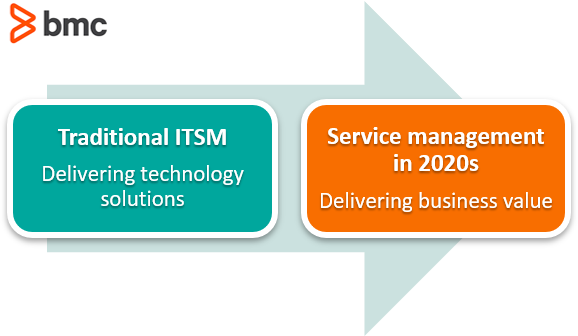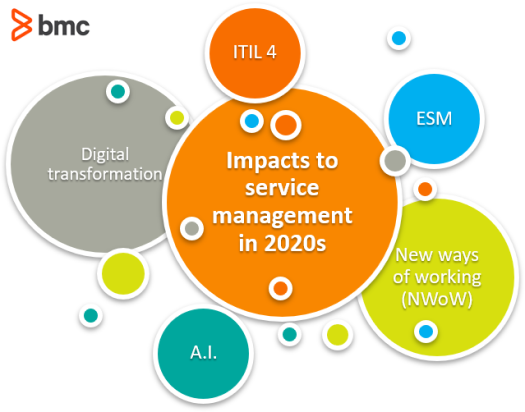When I started writing this, COVID-19 was just a whisper on the horizon, something that did not look like it would have an impact in my little corner of the world. How wrong could I have been? ITIL 4® had just been released and its focus on value streams and new ways of working, on agile, DevOps, Lean, and other frameworks had given it a new lease on life. ITSM was starting to look ‘new and shiny’ again. Then the world seemed to stop.
What, you may ask, does all this have to do with the state of ITSM today? I believe it has put service management under the microscope. Organizations that have efficient and effective service management in place will survive this crisis in a much better state than those that do not. The ability to quickly and safely rollout and support new technology to enable effective remote working, to partner with new vendors urgently, to develop and support new capabilities—these will all be much easier in an organization that really ‘gets’ service management in 2020.
Service management, not ITSM
In 2020 we are in a place where IT and the business are converging. This is a move that needs to be encouraged and the first thing we need to do is to stop talking about IT service management (ITSM) and simply talk about service management. Every service today is enabled by technology to a lesser or greater degree. Calling out the IT component of service management puts an artificial divide between business and IT that should no longer exist.
Every business team will have its own technology expertise, people who have a deep knowledge of how technology enables what they do. That is not to say that we do not need dedicated IT resources. But, just as those working primarily in the business need to have technical savvy, anyone who works in the specialized technology arm of the organization needs to have comprehensive business knowledge. They must understand how what they do enables business value to be achieved.
This connection to the business mission and values is the force behind the biggest change in service management we have seen over the past 10 years and this is what is shaping the state of ITSM in 2020. Delivering business value rather than technology solutions is now our raison d’être.

ITIL 4 keeps pace with business value
The release of ITIL 4 in 2019 recognized this change in focus, the concept of the service value system (SVS) maps the route from IT-enabled services to business value. While ITIL is not the only show in town, it is the most frequently adopted ITSM framework and, as such, it is intrinsically linked to the state of ITSM.
People before technology
One of the key trends I am seeing in ITSM currently is that we are finally valuing people over technology. Rather than being focussed on the technology we are using, we are now starting to understand that devices, networks, and connectivity are not what really matters to the business. What does matter is what people are able to do with the technology. IT is a business enabler, not something that stands on its own. Technology is not successful unless it contributes to business value.
Flexible service management
Service management has now transformed from the rigid processes of 25 years ago, to today’s agile practices that are responsive to business needs. This seismic shift puts service management in a very healthy state for 2020 and beyond. The migration of service management practices to the enterprise, beyond IT, has greatly increased the value of traditional ITSM frameworks and provided further impetus to extend and improve practices.
The investments made globally in service management are being realised in 2020, while much of the world is in crisis mode, with a huge proportion of the workforce being moved to remote working. Businesses are seeing, firsthand and in a very visible way, exactly what effective service management can deliver.
The organization I am currently working with is not one that has traditionally embraced remote working, yet the COVID lockdown suddenly made this essential for survival. Bringing thousands of people on to a video collaboration platform within days could not have been achieved without service management practices. And—the success of this initiative did not go unnoticed by the wider organization.
ITSM is strong but pay attention
So, what exactly is the state of ITSM in 2020? ITSM is healthy, continuing to grow in acceptance, and improving with the adoption of new principles and ways of working. Service management at a wider level is thriving and transforming organizations at all levels.
There are some key areas that can be singled out for mention. These are the areas that we need to pay attention to—they’re making the biggest impacts to the way that service management functions in 2020:

Artificial Intelligence (AI)
Artificial intelligence is being embraced by organizations globally. While AI powered service desks are still not commonplace, there are more and more AI assisted operations appearing. A report from Gartner suggests that by 2022 over 70% of white collar workers will be interacting with conversational platforms on a daily basis.
New ways of working (NWoW)
Flexible and remote working is transformative. NWoW is giving people work-life balance and allowing them to be productive away from the office. Businesses that had already embraced NWoW moved into lockdown with barely a ripple, others had to sprint to catch up, some didn’t make it.
There is still a lot of resistance. Boomers and GenX are apt to mistrust these new working conditions and doubt the ability of staff to maintain or even boost their productivity. Millennials shake their heads and wonder what all the fuss is about.
The bottom line? NWoW are not going away. This is a perfect case of adapt—or lose your best staff to a business that has.
Digital transformation
Digital transformation is not just about technology. While that is obviously a critical factor, it is also about cultural change that forces companies to question the status quo, to experiment, and to embrace failure. Digital transformation is fundamentally about integrating digital technology throughout the organization, into every facet of business delivery. It will change the way you interact with customers and produce business value.
Enterprise service management (ESM)
The success of ITIL and other service management frameworks has not gone unnoticed by the business outside of IT. Service management toolsets have pushed the boundaries beyond IT support and have been quickly adopted by departments such as HR and facilities management.
As enterprise service management takes hold, we see a move from separate toolset installations to shared toolsets, and then to shared service desks and shared processes. ESM is growing at a rapid rate and is driving the development of toolsets and frameworks.
ITIL 4
According to a survey by ITSM.Tools, ITIL 4 adoption is strong. Over 50% of respondents to the survey indicated that they were either in the process of adopting parts of ITIL 4 or were planning to do so. The focus on business value in ITIL4 and its promotion of agile ways of working is increasing interest in the decades-old framework that has reinvented itself for the 2020s.
Service management transformed
The future is bright for service management, whether looked at through an IT lens or a business focus. As we move into the new decade, we can expect to see transformational changes in our industry, and we need to be able to adapt and keep pace with these changes. But service management is not going away anytime soon.
Additional resources
For in-depth knowledge about this topic, browse the BMC Service Management Blog or check out these articles:
- ITSM Trends
- How To Evaluate Your Organization’s ITSM Needs
- ITSM Features to Look for in Great ITSM Software
- How IoT is Impacting ITSM
- Why Do ITSM Implementations Fail?
These postings are my own and do not necessarily represent BMC's position, strategies, or opinion.
See an error or have a suggestion? Please let us know by emailing blogs@bmc.com.






